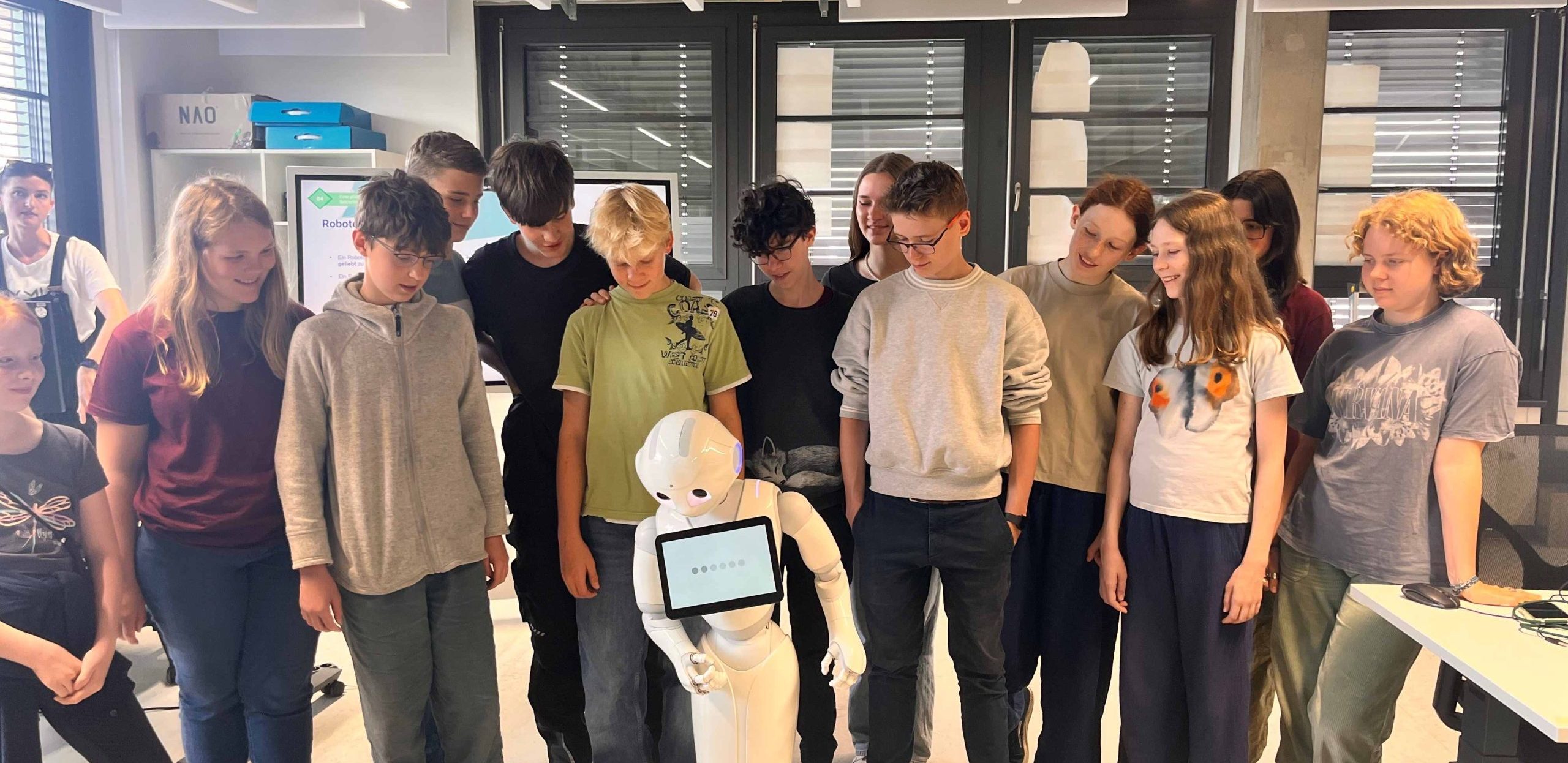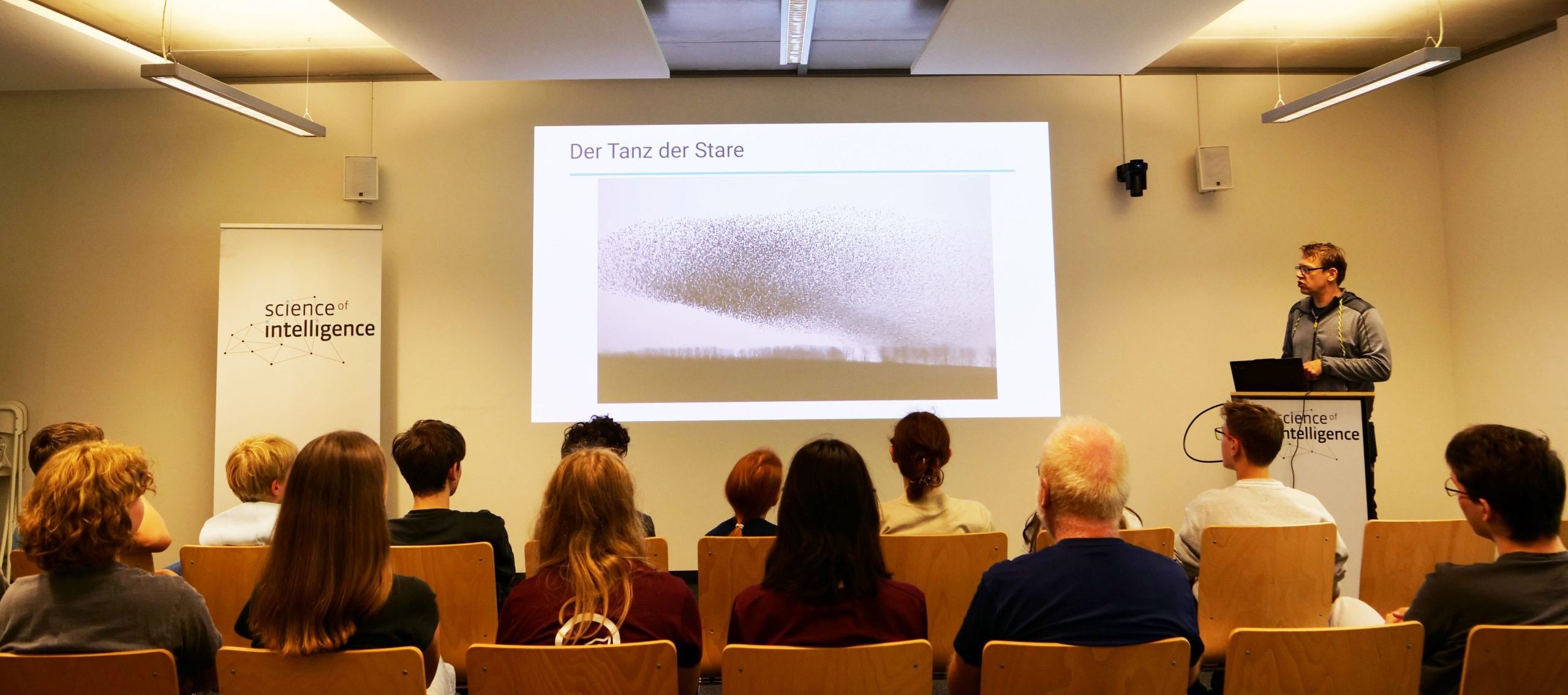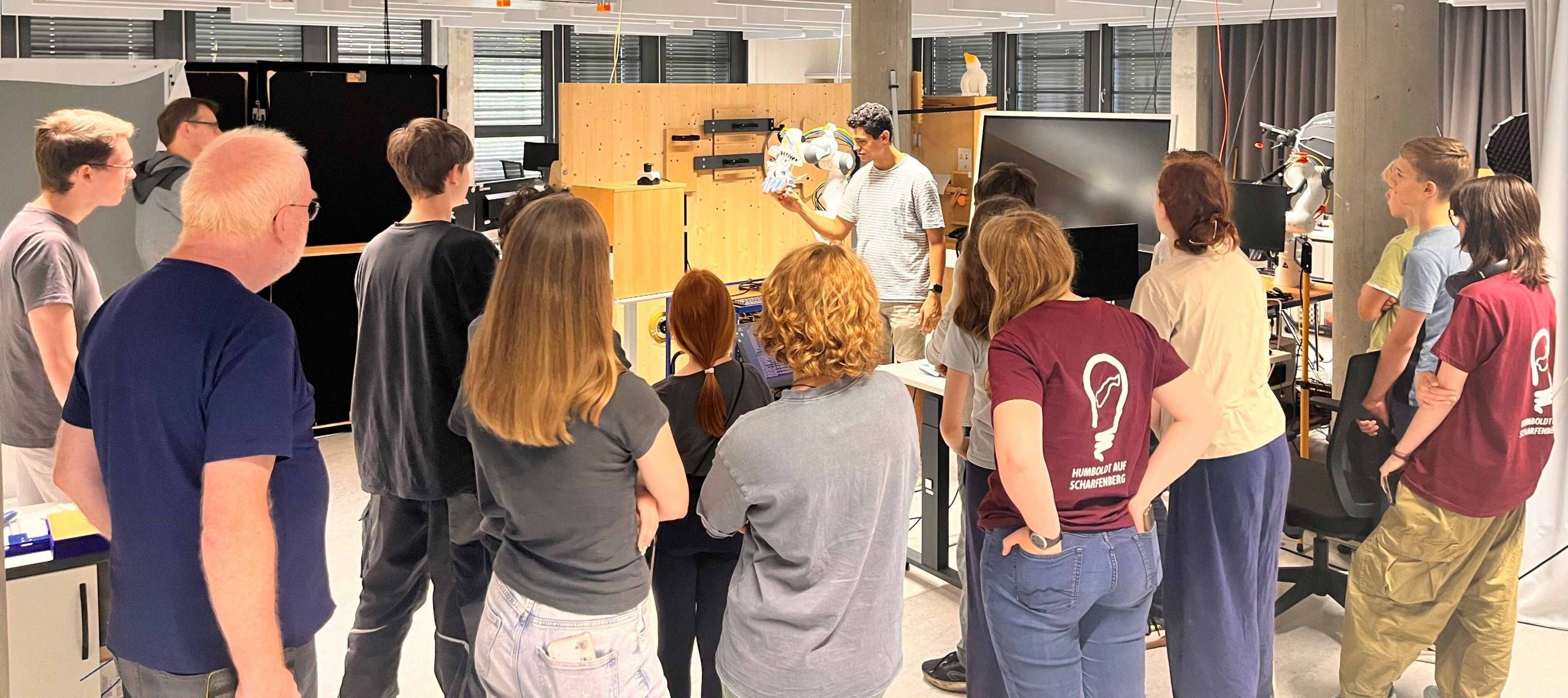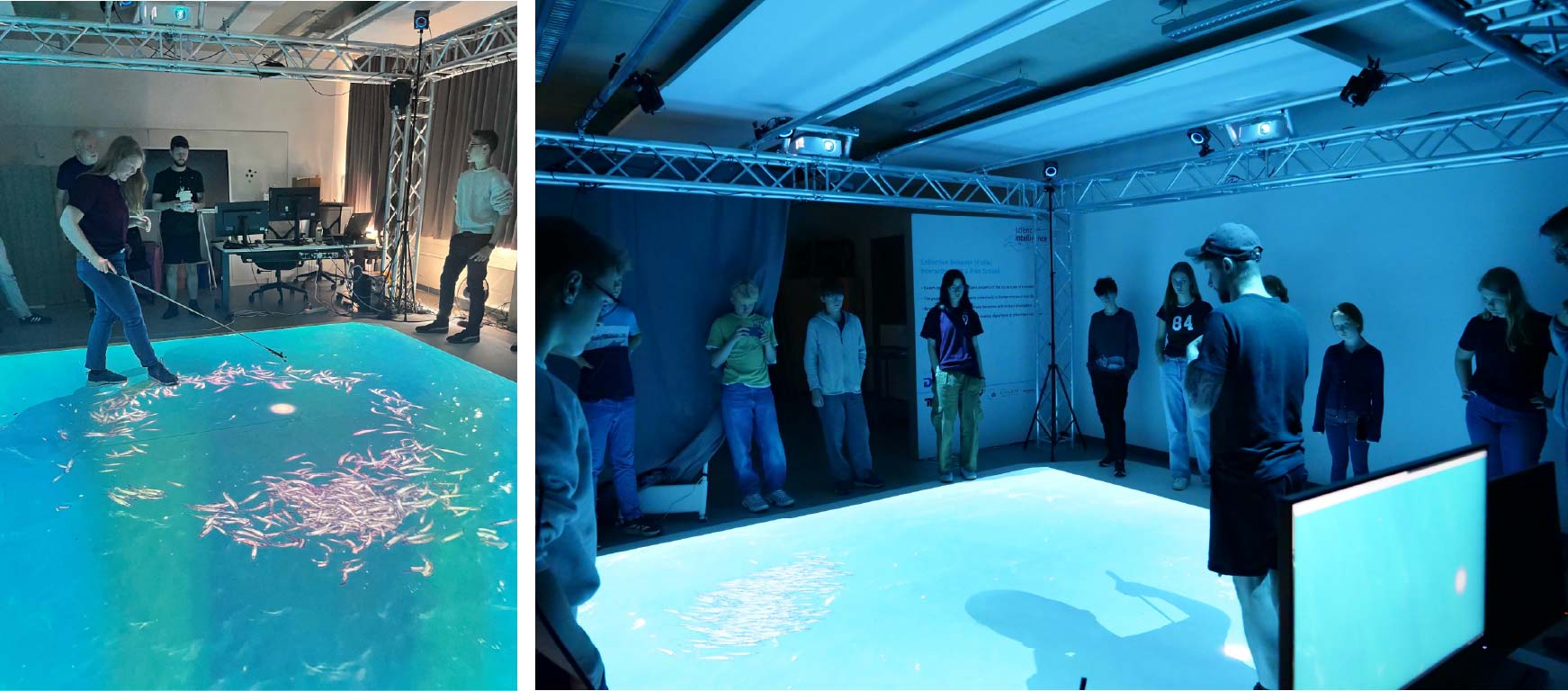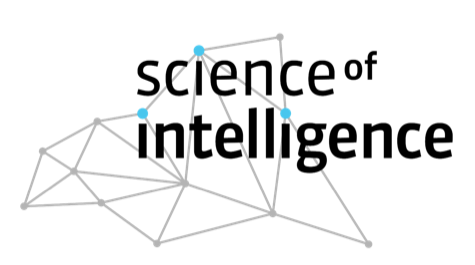JuniorAkademie Berlin visits Science of Intelligence: Young minds explore intelligence research
How does a school of fish decide where to go? What makes robots robust in a messy world? Can social robots make us better learners? And what do they have in common? They all help us understand how intelligent behavior works, in nature, in machines, and in ourselves.
A group of talented students from the JuniorAkademie Berlin recently visited Science of Intelligence (SCIoI) to explore these concepts. The visit took place as part of their nine-day educational program on the island of Scharfenberg, where they explored the theme “Order and Chaos – Structure Formation and Self-Organization in Nature and Technology.” The JuniorAkademie, initiated by the Berlin Senate Department for Education, Youth and Family, is dedicated to fostering intellectual curiosity and scientific thinking in motivated students from grades 7 to 10.
At SCIoI, the young participants got a close-up look at state-of-the-art research in artificial and natural intelligence, with a particular focus on how complex behaviors emerge from simple rules, a central topic in both the cluster’s research and in their course. The day’s visit, organized by SCIoI PI Pawel Romanczuk, was a mix of presentations, lab tours, interactive sessions, and lively discussions.
